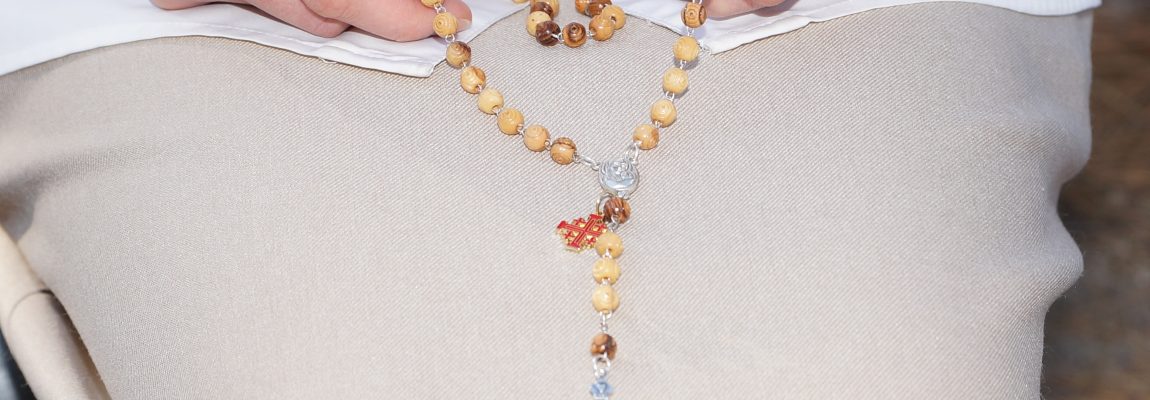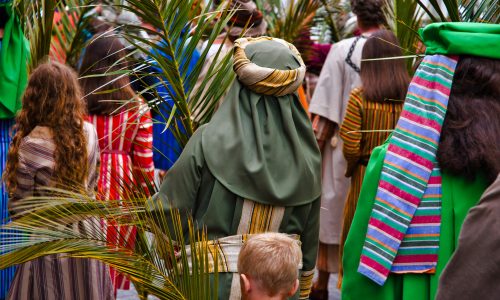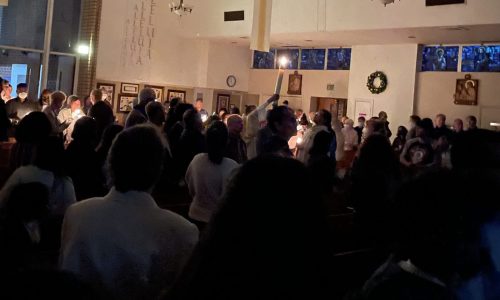by Sister Diane Heiss, SDSH
Suppose a leisurely Sunday morning is interrupted by sudden, harsh sounds. Perhaps the kids are playing their video games way too loud? First you call (or perhaps yell?) and tell them to turn it down.
When there is no improvement, you go to their room ready to confiscate the devices. At their bedroom door you stop, shocked, because the noise isn’t coming from their room; and it slowly dawns on you that the noise is coming from outside, maybe from the harbor, since you live nearby. As you walk to the corner, there is a scene of utter chaos as people are running away from the harbor screaming, and the only word you can understand is “invasion.” The explosion of weapons being fired soon obliterates all other noises.
Does this sound like the promo for a new movie or book? Perhaps, but our brothers and sisters in the Ukraine have experienced this for the past 1 ½ years as their country was invaded and is still under attack.
Invasions have occurred in the past and continue to occur in many parts of our troubled and wounded world. For over 900 years, armies of what would later become the Ottoman Empire conquered country after country. For months the Holy Father had urged Catholics to pray the rosary daily, asking the help and protection of our Blessed Mother.
There was a major sea battle on Oct. 7, 1571, in which the Catholic fleet decisively defeated that of the Ottoman Empire, thus preserving Christianity in Europe. Due to this unprecedented naval victory, Pope Pius V declared that henceforth Oct. 7 would be celebrated as the feast of “Mary, Queen of Victory.”
Eventually a later Pope changed its title to the current feast of “Our Lady of the Rosary.”
The rosary is a beautiful prayer in which we meditate on major events in the lives of Jesus and his mother Mary. Mary is not seeking fame or glory for herself; rather she desires to lead us to Jesus. It is composed of five decades (coming from a Latin word for ten) of ten beads each on which are prayed the Hail Mary, preceded by an Our Father and followed by a Glory Be. With each decade, we consider a different mystery, (coming from the Latin mysterium, meaning hidden truths revealed by God). Traditionally certain days each week are dedicated to the mysteries.
Thus, we pray the Joyful Mysteries, including the announcement, birth and early life of Jesus on Mondays and Saturdays. On Thursdays, with the Luminous Mysteries, we accompany Jesus during his adult years, his teaching and miracles. We keep company with Jesus during his passion and death on Tuesdays and Fridays, praying the Sorrowful Mysteries, and we rejoice with Jesus at his triumph over death, the sending of his Holy Spirit and the homecoming of Mary, body and soul to heaven with the Glorious Mysteries on Wednesdays and Sundays.
As Jesus was dying on the cross, He gave Mary to be our mother, and each of us to her as her children. (Jn. 19:26-27) A good and loving mother is always concerned about the welfare of her children. Mary is the most loving of all mothers, and she wants to help us to Do whatever He tells you. (Jn. 2:5)
Let’s turn to her, asking her help to deepen in friendship with her son Jesus and follow him more closely. St. Louis de Montfort said, Mary is the safest, easiest, shortest and most perfect way of approaching Jesus.
Praying the rosary, especially during October, the month of the rosary, is a good way to begin.
For your family:
- Find the Scripture citations for the mysteries on the Vatican website and read these aloud before each decade as you pray the rosary.
- Research the beginnings of the rosary by typing “origin and development of the rosary” in your device’s search bar.
- Find rosary crafts for your children, and teach them how to make a 10-bead rosary.
- Let your children draw pictures illustrating the mysteries, and as you pray the rosary, display those corresponding to that day’s mysteries.
- Plan a celebration for Oct. 7. Include a short prayer service and a special meal.
Published in Orange County Catholic paper 9/27/2023 – Click for original article



